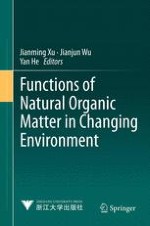2013 | OriginalPaper | Buchkapitel
Determination of Labile Fe(II) Species Complexed with Seawater Extractable Organic Matter in a Seawater Environment
verfasst von : Hisanori Iwai, Masami Fukushima, Mitsuo Yamamoto
Erschienen in: Functions of Natural Organic Matter in Changing Environment
Verlag: Springer Netherlands
Aktivieren Sie unsere intelligente Suche, um passende Fachinhalte oder Patente zu finden.
Wählen Sie Textabschnitte aus um mit Künstlicher Intelligenz passenden Patente zu finden. powered by
Markieren Sie Textabschnitte, um KI-gestützt weitere passende Inhalte zu finden. powered by
